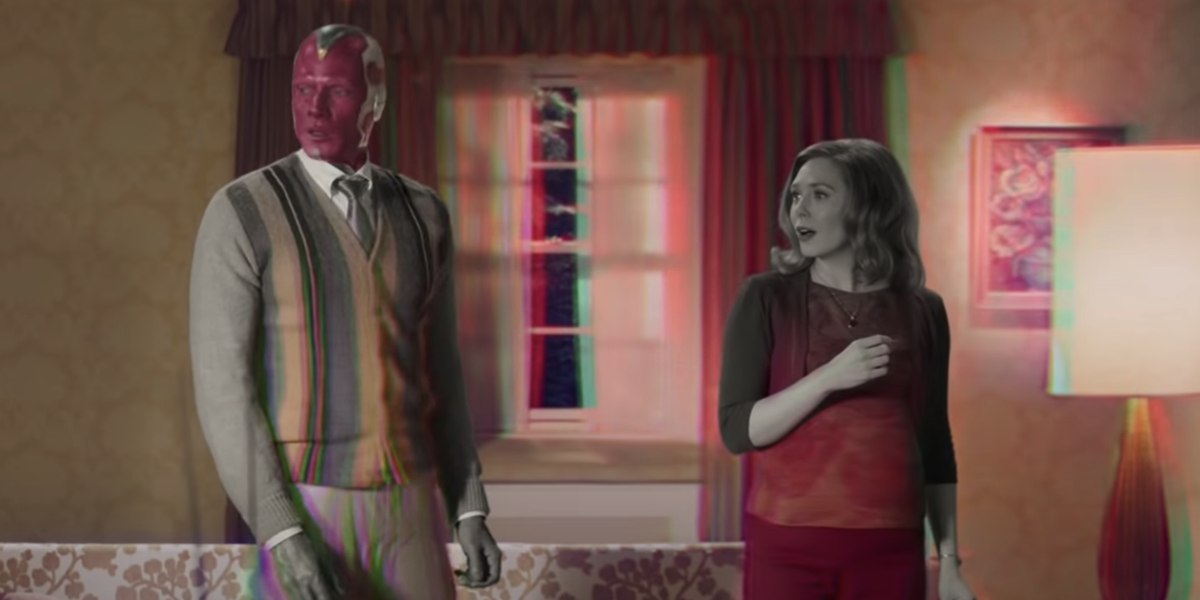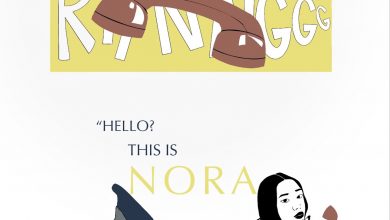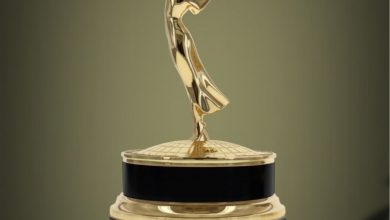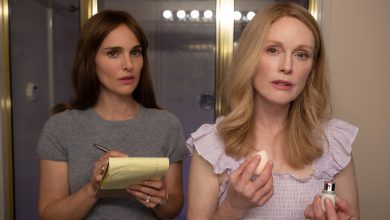Welcome to the Neighborhood: What Marvel’s WandaVision Reminds Us About Sitcoms, American Suburbia, and the Treatment of Wanda Maximoff

Image Source: YouTube
Image Description: Paul Bettany as Vision in “Marvel’s WandaVision” stands to the left. He has a maroon-colored face with a yellow stone in the center of his head, a sweater in a faded yellow and green, a tie in a faded green, and slacks in gray as he looks off in the distance. Opposite him is Elizabeth Olsen as Wanda Maximoff wearing a maternity blouse that’s turning red, a pair of red pants, short hair that’s in black and white. Her skin tone is also in black and white as she looks around in awe. Behind them is their living room, where a couch, a lamp, a curtained window, and a painting begin to come into color.
In the world of genre fiction, everything, to quote the “Wizards of Waverly Place” theme song, is not what it seems. A child could be the face of evil, a house could have a demon inside it, and a new couple on the block could be a reality-altering witch and her android boyfriend.
Even if you’re not familiar with the turbulent romance between Wanda Maximoff/Scarlet Witch and the Vision in Marvel Comics, you might know their cinematic counterparts (played by Elizabeth Olsen and Paul Bettany, respectively) finally became a couple in 2018’s “Avengers: Infinity War,” only to have their romance threatened by Thanos. Now that the dust has settled on last year’s “Endgame,” Wanda and Vision have entered a new stage of their relationship: headlining “WandaVision,” a new TV series that will stream exclusively on Disney Plus next year. And, true to the nature of their relationship, the show will be anything but normal.
Described by Entertainment Weekly as “a wonderfully, weird send-up of sitcoms of the past,” “WandaVision” follows the couple trying to live a normal life away from the Avengers, all while cycling through each decade of sitcom history. Each episode is, as executive producer Jac Schaffer explains, “a love letter to the golden age of television,” taking inspiration from beloved sitcoms of yesteryear. Case in point: the series premiere sees Wanda and Vision in a black and white suburbia not unlike the one you’d see on campy 50s classics like “The Dick Van Dyke Show” (Fun fact: Beloved comic actor Dick Van Dyke, was consulted to help “WandaVision’s” creative team authentically re-create the classic 50s sitcom vibe). Though it bears the familiar Marvel Studios logo, “WandaVision” is a sci-fi show all the same. Anything that looks or sounds “normal” in science fiction — and, by extension, genre fiction in general — probably isn’t.
Because one of genre fiction’s most interesting qualities is its ability to challenge common ideas that are part of our everyday lives, “WandaVision” has the potential to challenge problematic ideas associated with suburban settings, some of whom have become part of “the status quo” despite its insensitive undertones. After all, suburbia has often been used by sci-fi creators to challenge their audience to reconsider suburbia’s status as the symbol of the American Dream. In science fiction, an idyllic setting like suburbia feels more alien than a little gray being landing on Earth. And the concept of and the means of achieving the American Dream makes us humans seem more threatening than any visitor from outer space. Sometimes all it takes is some weirdness to make us realize how dehumanizing conformity can truly be, and nothing is more synonymous with conformity than the suburbs.
Don’t You… Forget About the Racist History of Suburbia
To those who survived the Great Depression and World War II, living in a cookie-cutter home with a white picket fence and raising 2.5 kids in a modest neighborhood was the highest standard of living. Thanks to the sitcoms of the 50s and 60s, suburbia became immortalized in pop culture as the ideal for viewers and future sitcoms to strive toward. What the sitcom forgot — or conveniently left out — was that the postwar history of the suburbs is mostly defined by racism and oppressive gender norms. In other words, sitcoms at that time made whiteness, women as domestic goddesses, and men as breadwinners the default.
In the teaser trailer, “WandaVision” portrays the characters as a typical 50s sitcom couple: Wanda the dutiful homemaker, using her powers to make dinner, and Vision, the working husband who can’t leave the house in his android form. So, to pass for human, Wanda magically transforms Vision into a tall, dark-haired, white man. That blink-and-you’ll-miss-it scene is the trailer’s first subtle nod to Wanda and Vision’s comic book history.
In the comics, Wanda and Vision were never fully accepted by other characters. For example, Wanda’s brother, Quicksilver, shunned her because he refused to accept his sister’s love for Vision, who he called “that thing.” Additionally, in a 1973 issue of “The Avengers,” Vision was targeted by a supremacist hate group who called him “plastic scum.” By that point, the Supreme Court’s decision on Loving v. Virginia was a few years old. Wanda may have been a witch but she was still a white woman; Vision was an android and a literal person of color. People can rail against comics getting “political” all they want, but the truth is social commentary in comics isn’t new. The subtext has always been there; one look at Wanda and Vision’s stories over the years is proof of that. Furthermore, the shot of Vision disguising himself as a white man also acts as a nod to the real-world history of the suburbs.
During his re-election campaign, President Donald Trump addressed a tweet to “Suburban Housewives of America,” informing them that their “American Dream” was being threatened by a housing initiative supported by President-elect Joe Biden, which, as Trump believed, would bring “low-income housing” to their neighborhood. Naturally, when tweeting about striking down the initiative a few days later, Trump relied on racism as he promised suburban residents that once the poor could not move into the neighborhood “housing prices [would] go up based on the market, and crime [would] go down.” In a way, it was refreshing to finally hear someone say the quiet truth out loud, albeit crassly. The postwar history of the American suburbs is fraught with racial segregation thanks to redlining and denying Black Americans the opportunity to purchase property, thus forcing them into urban housing projects. In turn, suburban-set sitcoms excluded Black people until the 1970s when sitcoms started allowing predominantly Black casts.
For “WandaVision” to depict a (quasi) interracial couple interacting in a sitcom setting typically closed off to them at that time is quietly groundbreaking. Yet, in the trailer, Wanda’s desire to be normal means requiring Vision to hide his identity from potentially intolerant neighbors, and that’s bound to break hearts. It’s a reminder that interracial relationships will be frowned upon by bigots no matter what — and internalizing that hatred can damage how we see ourselves and any relationship we form with people from different racial communities. But, racial prejudice wasn’t the only thing television would broadcast back in the day.
“WandaVision”: An Avenue to Challenge Gender Norms or Maintain the Status Quo?
In another brief scene, while having dinner with their human neighbors, Wanda is questioned about seemingly every detail of her and Vision’s relationship, including when they got married and why they don’t have kids yet. For the most part, it’s played off for laughs, until the next shot reveals Wanda and Vision staring worryingly at each other as they try to come up with a good cover story. This scene, however, reveals quite a bit about another symbol synonymous with the American Dream.
In addition to suburbia, the “nuclear family” concept was normalized postwar. Sitcoms like “Father Knows Best” and “Leave It to Beaver” crafted a rigid breadwinner/homemaker model where a woman was expected to cook, clean, and take care of the family. If she wanted a life outside the home, it wasn’t allowed. The earliest TV show that skewed such boundaries was “I Love Lucy.” There, Lucy Ricardo (played by comedy pioneer Lucille Ball) dreamed of breaking into show business, despite her husband Ricky (played by Ball’s real-life spouse Desi Arnaz) aggressively trying to stop her. Yet, almost all the episodes in the series saw Lucy scheme to get the spotlight on her, often with hilariously mixed results. “I Love Lucy’s” slight satirical edge was groundbreaking for the time, but, as the show has aged, one constant appeared in Lucy’s few successes at fame: Ricky was her gateway to stardom. The show conveys the less-than-empowering message that a woman can’t function outside the house; she needs a man, preferably her husband, to guide her through the outside world and steer her away from distractions that would stop her from being a homemaker. To an extent, the idea that a woman needs a man to give her story arc or character more weight has also been at play in the MCU, many years after “I Love Lucy’s” run on television. And nowhere has it been more apparent than in Wanda’s character arc as it has been mostly defined by the men in her life.
2015’s “Avengers: Age of Ultron” saw Quicksilver die fighting alongside the Avengers, with her grief signified by a grand display of her powers when confronting Ultron and his hench-robots. While 2016’s “Captain America: Civil War” makes Wanda the catalyst for the government trying to hold the Avengers accountable for their actions, she’s sidelined for a majority of the movie. In the meantime, Wanda and Vision grow closer while the former is punished for the destruction caused in the opening act. Unfortunately, Wanda gets sidelined again in “Infinity War.” When she finally joins the Avengers in battle, it’s near the end of the film. Worse yet, Wanda winds up as one of the many characters Thanos snaps out of existence before the end credits. As cool as that (kinda pander-y) “Women of Marvel” scene in “Endgame” is, it doesn’t change the fact that Wanda and most of the other women participating in that scene, including Brie Larson’s Carol Danvers/Captain Marvel, had been sidelined in the franchise for many years.
With this in mind, one could argue that “WandaVision” is an act of course-correction on MCU mastermind Kevin Feige’s part, just like one could interpret “Black Widow” as an attempt to placate fans unsatisfied by the fate handed to the beloved Avenger in “Endgame.” Here’s a TV show that makes Wanda the main character, not just another Avenger, and gives her powers and relationships the depth and complexity they deserve, not just brief, throwaway scenes hinting at the potential of Wanda’s true powers or depict Wanda as how the men around her — from Ultron and Quicksilver to Vision and Captain America — view her. The teaser trailer even has scenes where Wanda uses her powers without hesitation or fear, a far cry away from the films where Wanda was afraid of using her powers and lacking a writer and director who could truly explore the self-doubt she battled upon joining the Avengers. Moreover, “WandaVision” is overseen by a female writer, a welcome change of pace from the various men, from Joss Whedon to Joe and Anthony Russo, that have handled all of Wanda’s film appearances thus far.
Yet, controlling gender norms appears to be the first enemy Wanda encounters in her TV show, as evidenced by the briefly-teased dinner-interrogation scene. Furthermore, we hear Wanda tell Vision that she wants them to fit in and be a normal couple, but, in sitcom-land, that means starting a family and being a good wife and mother. There’s nothing entirely wrong with that at the moment, but, so far, the show’s executive producers are teasing some big character re-defining moments for Wanda (including exploring her “ill-defined” powers), but all fans are seeing is Wanda happily embracing the changes each decade of American sitcom history brings, including wearing new clothes and raising kids. There are brief shots of her powers in action, but nothing significant.
Can “WandaVision” Truly be the Key to Marvel’s Future?
I’m hoping that Marvel is holding back so they don’t spoil anything for fans excited to tune in. But, I can’t shake the feeling that Wanda will be preoccupied with building the happy home that she wants to live in (and that the writers may conveniently overlook the trauma she’s experienced and how that plays into her desire for early sitcom-style normalcy) and Vision will get a bulk of the major scenes that set and keep the plot in motion. Moreover, the teaser trailer already has me questioning whether Vision will be forced to go against Wanda and keep her in the home out of fear that she’ll wreak havoc once she steps out of the house. It’s strange how this one TV show can feel so modern yet so outdated all at once.
I’m not saying “WandaVision” will embrace and emulate the damaging and outdated tropes of sitcoms past; after all, this show has the potential to be a subversive critique as well as a love letter to Television’s Golden Age. However, the potential for “WandaVision” to fall back on the MCU’s regressive patterns of misogyny is there, too. Maybe I’m being too pessimistic — please forgive me if I sound like it; 2020 has nearly sapped all the positivity out of me — but there’s some precedence for this. Wanda has already been let down by the comics and the creative talent behind the films so far. Who’s to say television won’t disappoint her — and the fans who love her — too?




